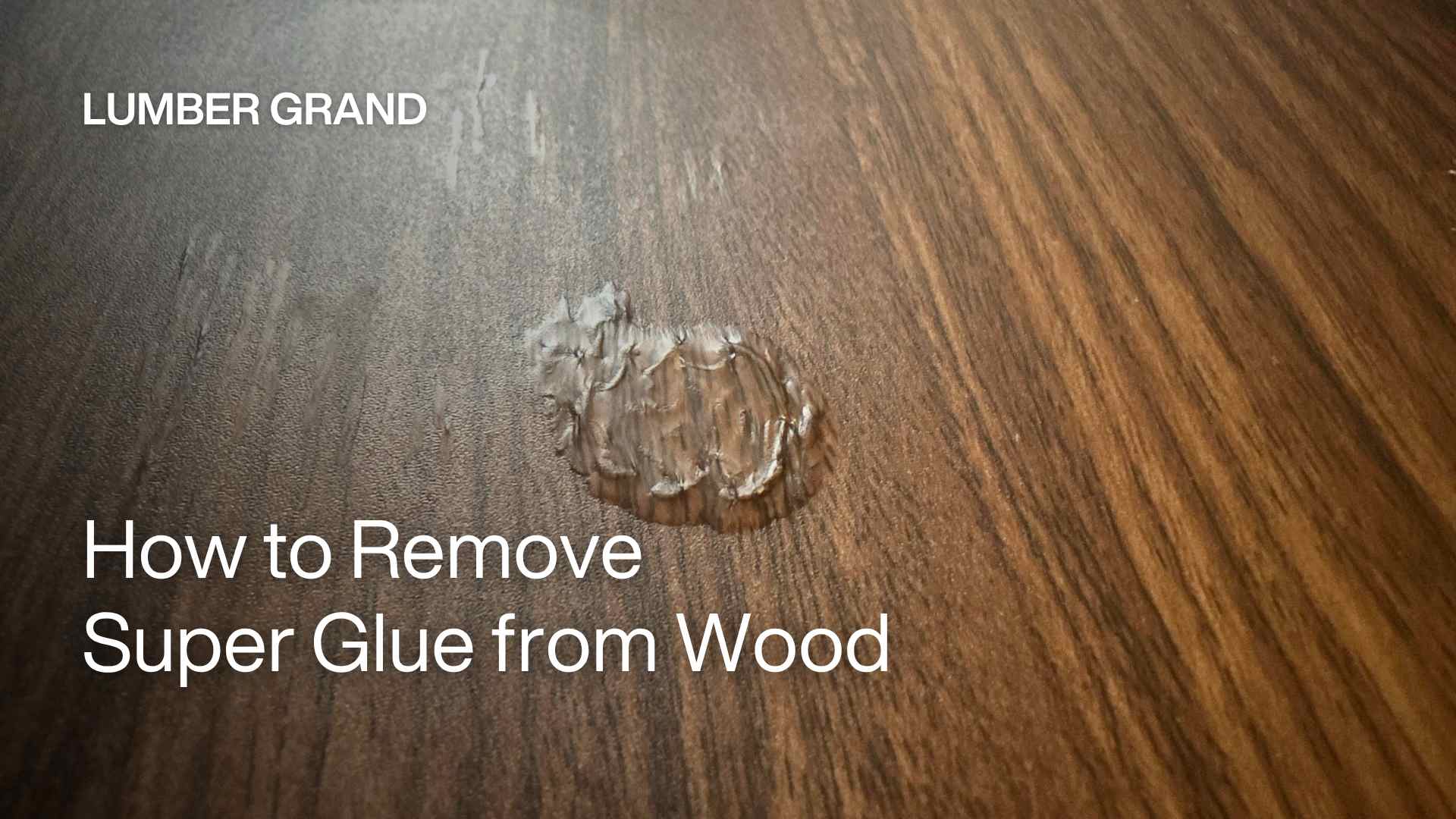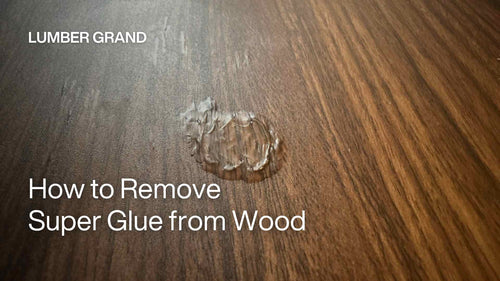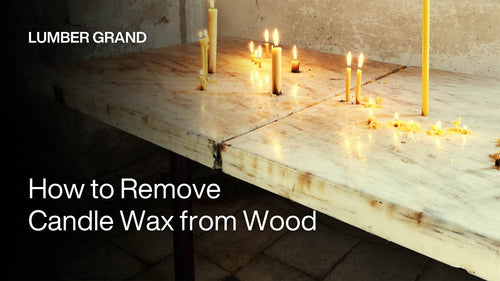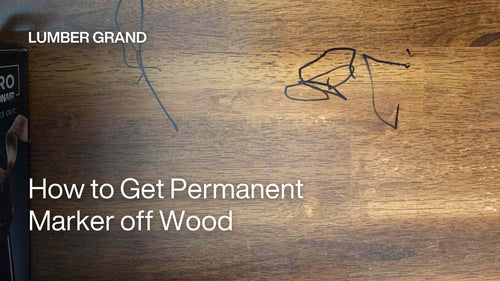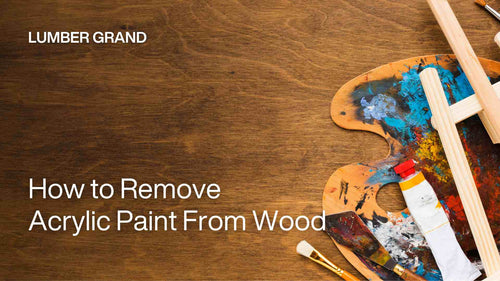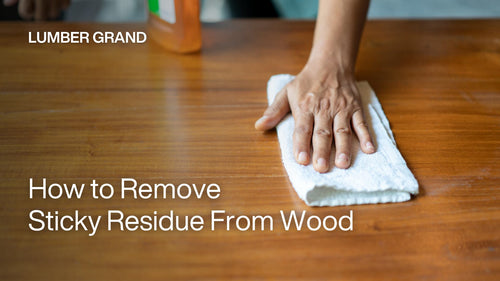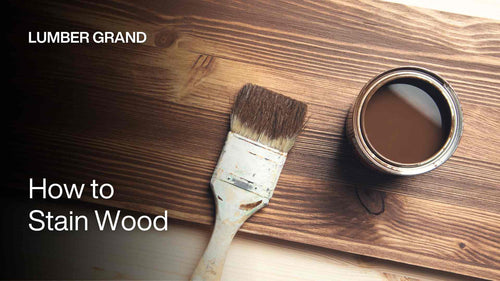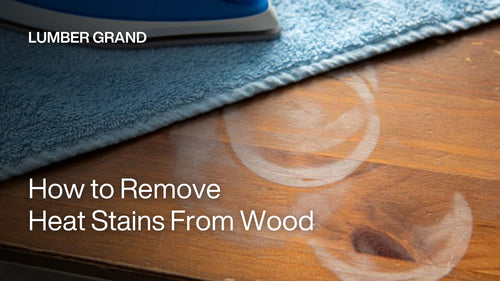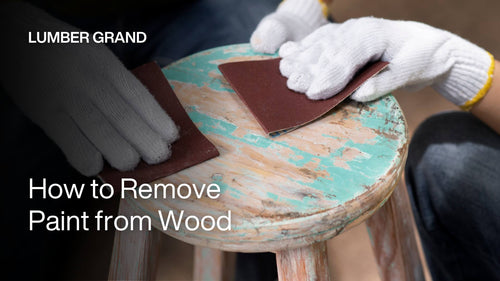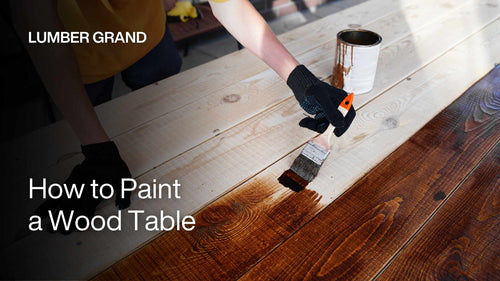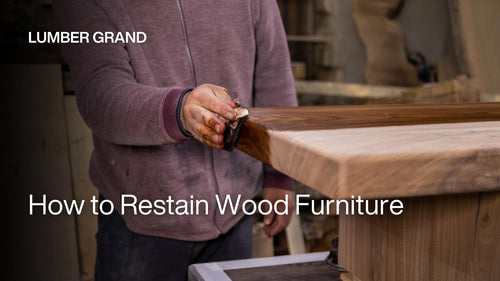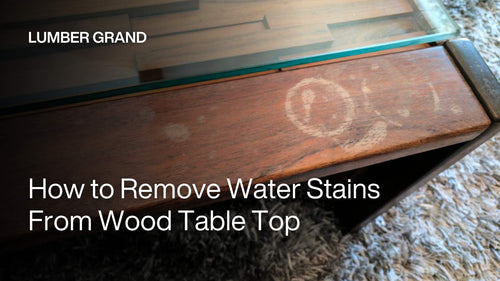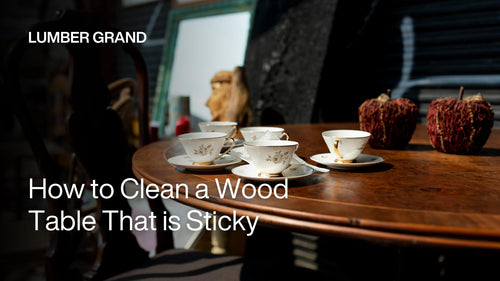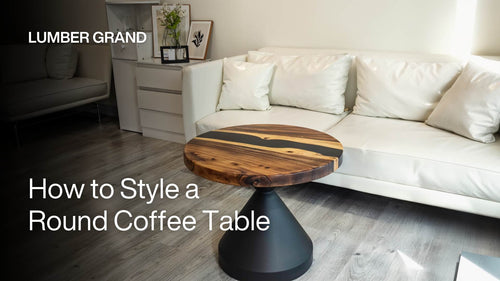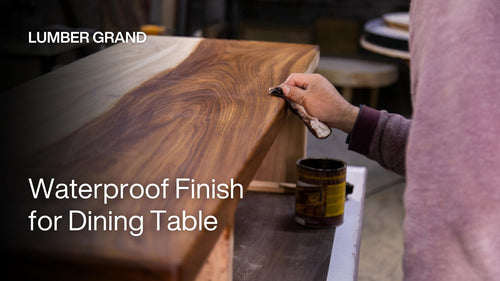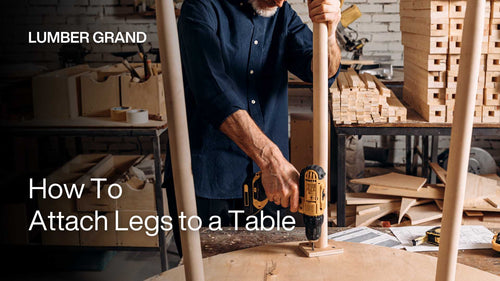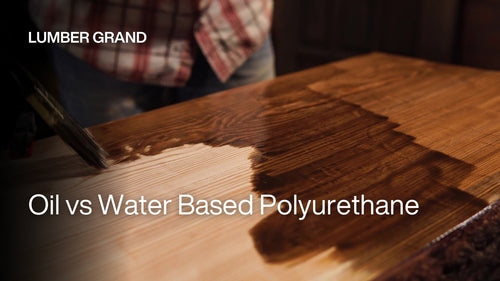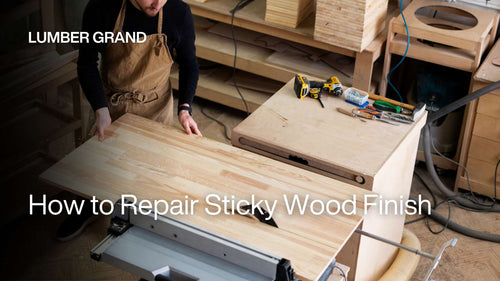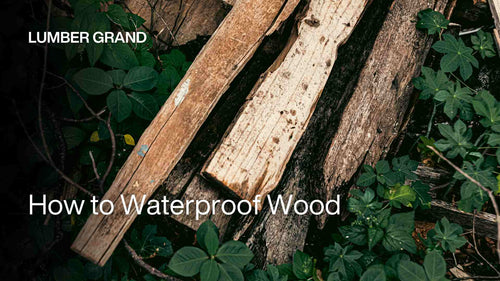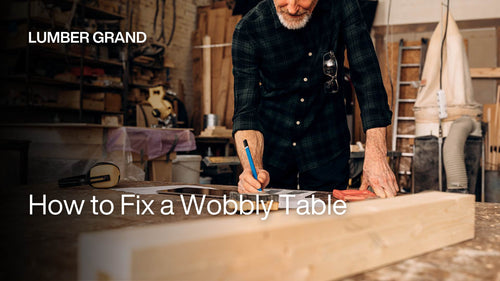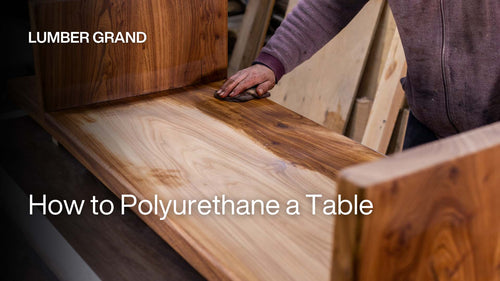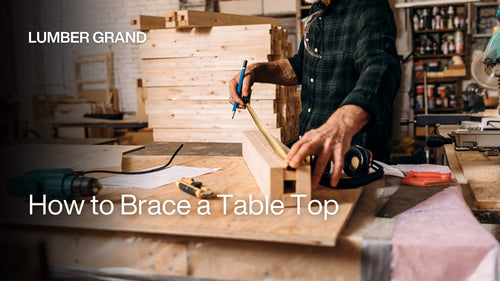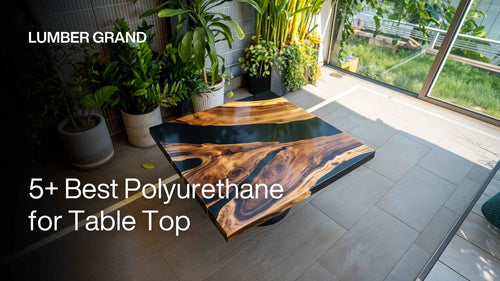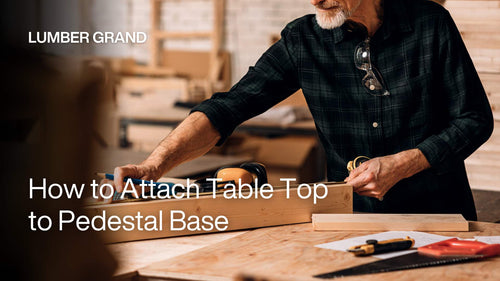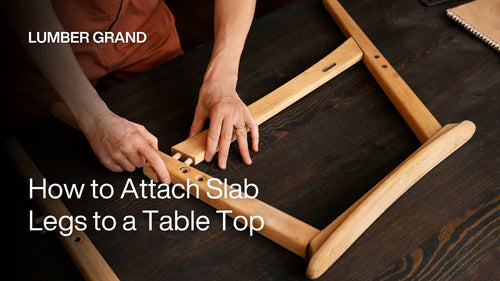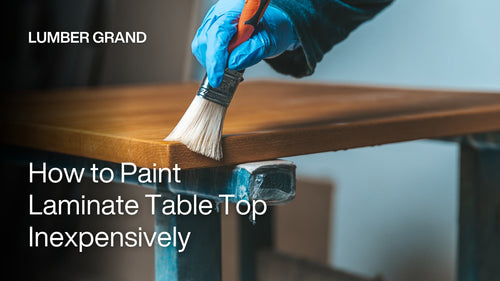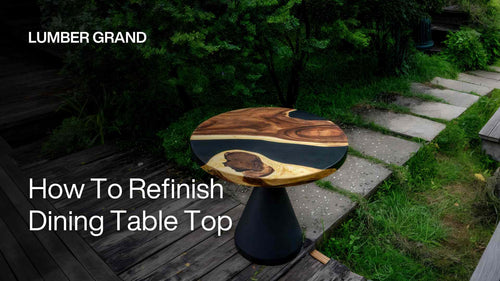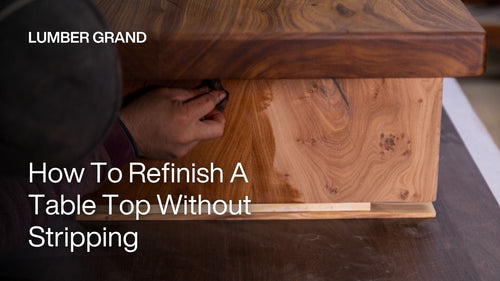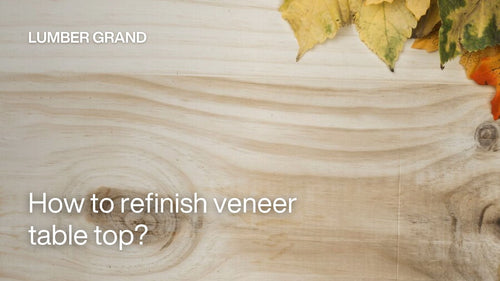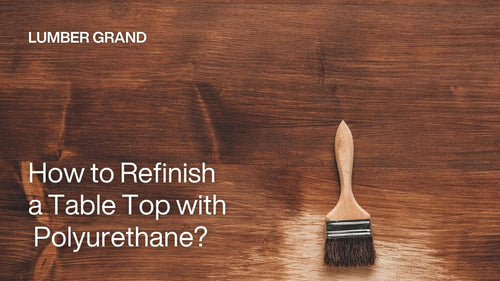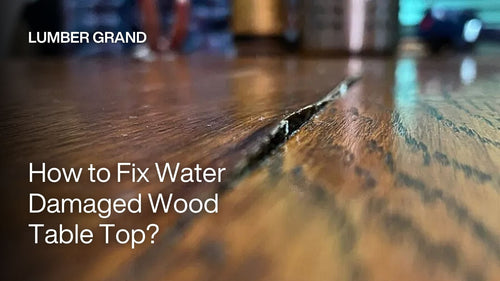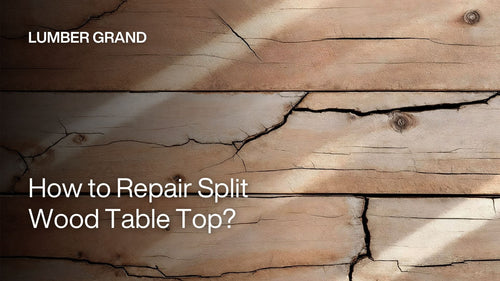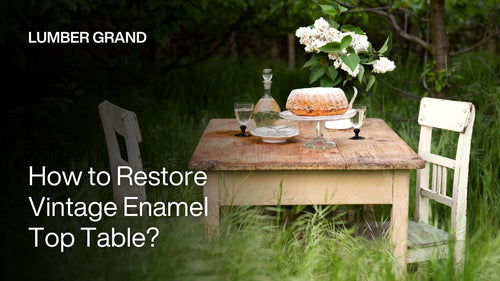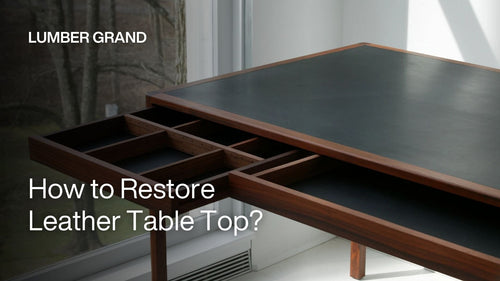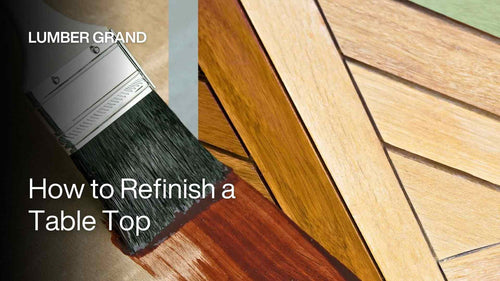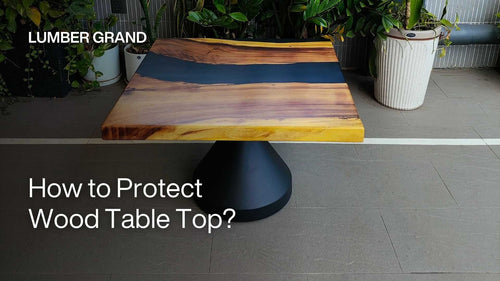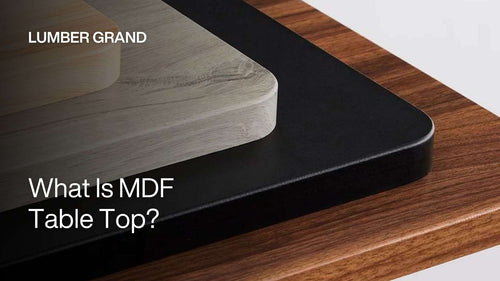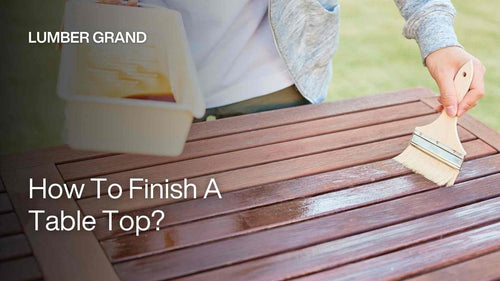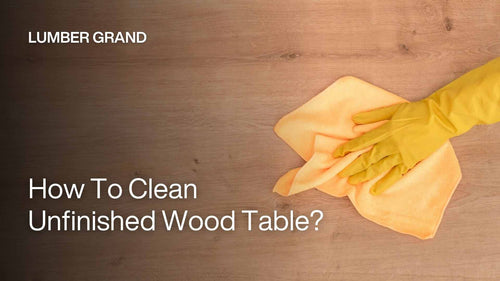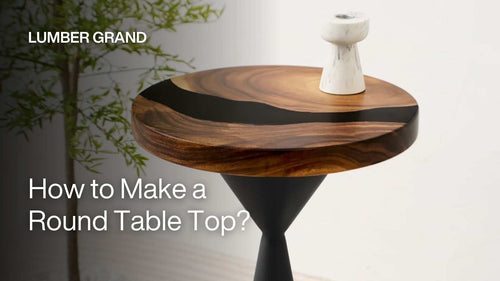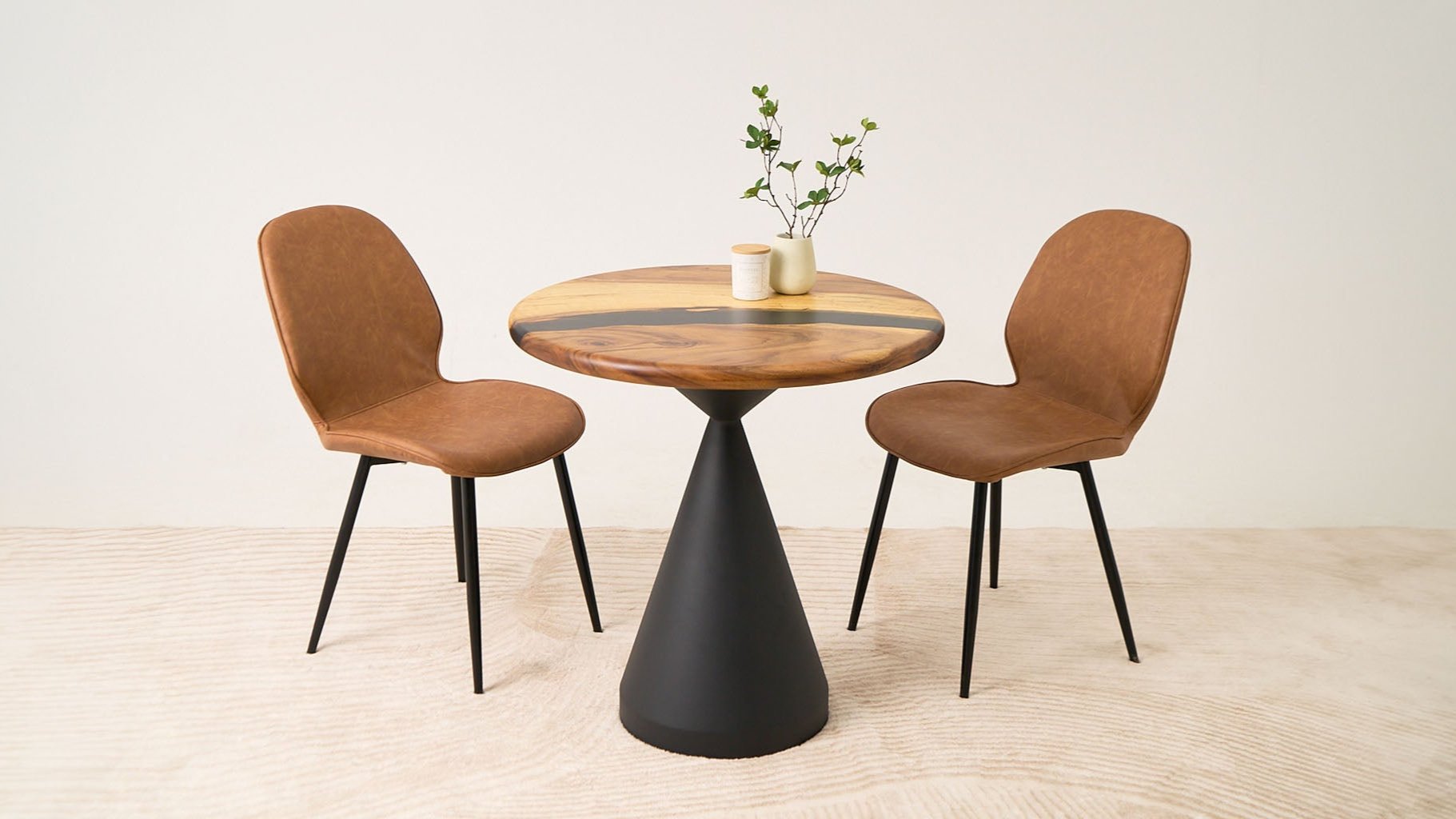If you need to know how to remove super glue from wood, you've probably just had one of those “wrong surface” moments. The glue was meant for the broken ceramic mug, not your wood desk. Now it's dried into a hard lump, lying so chill on your lovely wood table, and you have no way to scratch it off safely.
Don't be sad, as Lumber Grand has rounded up 4 tried-and-true methods that won't wreck your furniture. We've been discussing household items like acetone, super glue remover, or WD-40. This guide will walk you through step-by-step instructions on how to remove dried super glue from wood floor vs furniture to restore its shine. Read more!
Quick Answer Box: How to Remove Super Glue from Wood
Pick your method based on the glue situation you're dealing with. Before diving into the detailed instructions, here's a quick cheat sheet Lumber Grand compiled to help you pick the proper method for your situation:
|
Method |
Best For |
Caution |
|
Acetone |
Old or strong glue residue |
Can dull finish. Test first and condition the wood afterward |
|
Super Glue Remover (Debonder) |
Stubborn or large glue areas |
Choose one labeled “safe for wood”. Follow instructions carefully |
|
WD-40 |
Thick or old glue spots |
Test first. Wipe clean to remove residue |
|
Sanding |
Removing dried residue on unfinished or damaged wood |
Only for raw or refinishing wood. Excess pressure can remove the stain or finish |
It doesn't matter what type of wood furniture you're dealing with. If it's wood (wood table, cabinets, floors or any furniture inside your home), these methods work. The only thing you need to pay attention to is whether your wood is finished or unfinished. That's when you'll need to be more careful about which method you choose.
Latest blog this week: How to Remove Candle Wax from Wood
How to Remove Super Glue from Wood: 4 Quick Fix Methods
Every method below states exactly what you'll need, step-by-step instructions, and what to watch out for. You'll find one acetone method for heavy-duty removal. And three removing super glue without acetone alternatives if you'd rather avoid strong solvents or work with more delicate finishes. Pick the most suitable for your situation, and let's remove that super glue from your wood.
1. Acetone (Nail Polish Remover): Powerful but Handle with Care
Best for: Old or strong glue residue, thick aged super glue, industrial adhesives, and stubborn spots.
Acetone is the heavy hitter of super glue removal. You've probably got some sitting in your bathroom right now. It's the main ingredient in most nail polish removers. Acetone is a powerful solvent that dissolves cyanoacrylate almost on contact. It breaks down the molecular bonds in super glue faster than anything you can buy at a regular store.
That acetone removes super glue power comes with a catch, though. It dissolves glue and also dulls wood finishes, varnish, lacquer, and paint of wood furniture. It'll get the job done, but you must know what you're doing.
Follow these simple steps:
-
Step 1: Make sure you're using pure acetone or acetone-based nail polish remover (check the label because some "gentle" removers don't contain acetone)
-
Step 2: If the glue spot is too thick, you can use a plastic scraper to scrape off some of the glue before using acetone.
-
Step 3: Then, test the acetone on a hidden spot and wait 2 minutes to check for damage. This step is NOT optional.
-
Step 4: Dab a small amount of acetone onto a cotton swab or soft cloth. NEVER pour it directly onto the wood.
-
Step 5: Blot the wetted swab onto the super glue spot (don't scrub yet). Allow it to sit for 30 — 60 seconds while the acetone dissolves the glue. You should see it start to soften up and develop tiny bubbles.
-
Step 6: Gently wipe away the loosened glue with a clean part of your cloth. Repeat with a fresh cotton swab and more acetone if there is still glue.
-
Step 7: As soon as all the glue is spent, wipe down the surface with a damp cloth to remove acetone residue
-
Step 8: Allow it to dry thoroughly with a clean towel. Finally, wood conditioner or furniture polish is applied to restore moisture and gloss to the treated surface.
Note:
-
Work in a well-ventilated area when you work with acetone. The pungent odor will give you a headache if you breathe it in a confined space. Have a window open or keep a fan blowing as you work.
-
Wear gloves and a mask while you're doing this. These chemicals aren't something you want on your skin or breathing in for extended periods.

How to remove super glue from wood floor with acetone
Photo: kenVersus
You might like: How to Remove Sticky Residue from Wood
2. Super Glue Remover (Debonder): The Pro's Shortcut
Best for: Stubborn or large glue areas, heavy-duty spills, and valuable wood tables or furniture.
If the acetone method makes you nervous or you'd rather skip strong solvents altogether, debonders are your next best bet. Debonders (often called super glue remover) attack and dissolve cyanoacrylate adhesive on contact. These super glue remover products contain acetone or other solvents designed to break down super glue bonds quickly and efficiently.
How to remove super glue from wood table with debonder:
-
Step 1: Read debonder labels carefully before use (varies slightly from brand to brand in time to apply)
-
Step 2: Test the debonder on a hidden location on your wood first. Allow to sit for 5 minutes and observe for damage to finish
-
Step 3: Apply the applicator tip or cotton swab to put a dab of debonder on the spot where the super glue is located
-
Step 4: Let it stand for the time indicated, typically 1 — 3 minutes (no longer than instructed). You'll find the glue loosening and even bubbling.
-
Step 5: Gently wipe the surface with a clean, soft cloth to pick up the loosened adhesive. Should some residue be left behind, put a wee bit more on and repeat
-
Step 6: Now that all the glue has been removed, wash the surface in a warm, soapy water mixture (add a few drops of dish soap, and it'll be fine). Wipe out with a damp rag to remove debonder or soap residue
-
Step 7: Dry thoroughly with a clean towel
Note:
-
Not all debonders are created equal. Look for products labeled "safe for wood surfaces" or "furniture-safe". Popular wood-safe brands include Bob Smith Industries Un-Cure and 3M Super Glue Remover.
-
Debonders work fast, which means they can damage wood furniture finishes fast if you're not careful. Follow the timing instructions exactly. When in doubt, start with less time and reapply if needed.

How to remove glue from wood without acetone
Photo: Big Bad Builder LLC
You might be interested in: How to Get Permanent Marker off Wood
3. WD-40: The Sneaky Multi-Tool
Best for: Thick super glue blobs, old dried glue spots, and stubborn adhesive that won't budge with gentler methods.
WD-40 penetrates the adhesive deeply and breaks the bond without being too abrasive on wood finishes. What takes out super glue in WD-40? Petroleum distillates break down cyanoacrylate, and the lubricity lets you drag the residue out smoothly.
You can imagine WD-40 as the compromise removing super glue without acetone between messy home remedies and strong chemical solvents. It's strong enough to tackle dried, crusty glue without destroying your finish like some extreme solutions might.
Here's how to do it right:
-
Step 1: Spray a small amount of WD-40 onto the super glue
-
Step 2: Hold it there for 1 — 2 minutes. The WD-40 needs time to penetrate and soften the glue. You'll feel the glue start to melt under the cloth.
-
Step 3: Take a plastic scraper (credit cards are great) and peel the residue off slowly at an angle. The glue peels or flakes off easily with little pressure.
-
Step 4: If a slight amount of glue remains, reapply your WD-40 and repeat the previous steps. After you have removed all of the glue, clean the area with a clean, damp cloth to remove any residue from the WD-40.
-
Step 5: Completely dry with a clean towel
Note:
-
WD-40 can stain unfinished or raw wood furniture if left on for too long. Step 1 of your process can be a test if you're unsure.
-
Always wipe thoroughly afterward because leftover WD-40 residue attracts dust and can make your surface feel greasy.
-
If you're working with delicate antique furniture, try a gentler method first.

How to remove super glue from wood floor with WD-40
Photo: WD-40 Australia & New Zealand
Read more: How to Clean a Wood Table that is Sticky
4. Sanding: The Last-Resort Smoother
Best for: Unfinished/raw wood where super glue has penetrated deeply, and when all other methods above have failed.
We are constantly asked: “Can I just sand the super glue off wood table?” Technically, yes, but you shouldn't use it — at least not until you've tried everything else first. Sanding destroys protective finishes, creates uneven spots, and turns a small glue problem into a big refinishing project. It's like using a sledgehammer to hang a picture frame.
If you've made it this far, it means the super glue has won every other battle. Sanding is your nuclear option, but it comes at a cost.
When sanding is actually appropriate:
-
The wood furniture is completely unfinished (no varnish, paint, stain, or protective coating)
-
The super glue has penetrated deep into the wood grain
-
You've tried all 5 methods above, and none have succeeded
-
You're ready to refinish the entire surface afterward
-
The glue spot is on a project piece or workbench, not on heirloom furniture
How to remove super glue from wood by sanding:
-
Step 1: Start with 220-grit sandpaper or finer (nothing coarser because you'll create deep scratches)
-
Step 2: Sand with smooth, even strokes, always along the wood grain. Focus on the glue spot, but blend your sanding outward into the surrounding area. Sanding the glue spot alone will create a visible dip or patchy unevenness.
-
Step 3: Monitor your progress closely. You want to stop as soon as you see the glue is gone.
-
Step 4: Once all the glue has been removed, lightly sand this area to feather the repairs into the surface.
-
Step 5: Wipe off any dust with a tack cloth or a moist cloth
-
Step 6: Now you'll need to refinish the whole area. This may be re-staining, re-varnishing, or applying a new clear protective coat to match the rest of the surface.

How to remove a super glue from wood furniture with sanding
Photo: Starbond Adhesives
Helpful blog: How to Remove Paint from Wood
5 Wood Aftercare Tips to Restore Shine After Removing Super Glue
The adhesive is gone, your wood is clean, and you feel accomplished. Now, wood needs a little tender love care after you've stripped away glue and potentially some of its natural oils or protective coating.
-
Clean the entire surface: Don't just focus on the spot you treated in how to remove super glue from wood. Wipe down the whole with a slightly damp cloth and mild dish soap solution. This removes any excess residue your removal left behind and places everything on an even level.
-
Apply wood conditioner: Wood conditioner brings back the oils and moisture removed by glue removal. Moisten a soft cloth with a little and work it in circular motions on the treated surface. Let it sit for 10 — 15 minutes, then remove any residue.
-
Use furniture polish or oil: Once the conditioner has penetrated, use a high-quality or natural oil to restore shine. You can apply lemon, tung, or Danish oil for unfinished or oiled wood.
-
Blend the treated area: If the spot where you removed glue still looks slightly different, we can apply the polish or conditioner to the surrounding area, too. Sometimes the contrast isn't because you damaged anything. It's just because that one spot is now cleaner and more conditioned than the rest of the surface.
-
Consider paste wax as an additional protective layer: For high-traffic furniture or pieces that see a lot of use, finish with a thin layer of paste wax (like Minwax or Johnson's Paste Wax). This creates a protective barrier that prevents future damage and gives you that deep, furniture-store shine.

Restore shine after removing super glue with furniture polish or oil
Credit: Lumber Grand
Shop now: Square Wooden Epoxy Coffee Table 41" x 41"
Read more: How to Remove Acrylic Paint from Wood
FAQs
1. Can Dried Super Glue be Removed?
Yes, you can still remove dried super glue, but it will require stronger methods than fresh glue. You'll need specialized solutions such as WD-40, super glue remover, or acetone.
2. What Removes Super Glue Instantly?
Pure acetone or super glue removers come closest to "instant" removal.
-
Acetone breaks down super glue in about 30 to 60 seconds.
-
Super glue removers often work in 1 to 3 minutes.
That said, nothing removes super glue instantly. You always need to give the solvent some time to soak in and do its job.
3. Will WD-40 Remove Super Glue?
Yes, WD-40 can dissolve super glue on wood and most other surfaces. Just spray the liquid onto the glue area, allow it to penetrate for 1 — 2 minutes to loosen the adhesive. Follow this by using a plastic spreader to push out the glue carefully.
4. Does Vinegar Remove Super Glue?
No, vinegar isn't effective at removing super glue from wood. Although vinegar is acidic, it's not strong enough to break down cyanoacrylate bonds. Therefore, it's better to stick with acetone, debonders, or WD-40 for reliable results.
5. Is Super Glue Permanent on Wood?
Yes, super glue can remain on wood permanently once it has dried and is stored in normal humidity conditions. However, "permanent" doesn't mean "impossible to remove." With that being said, you can dissolve it with glue removers like WD-40, super glue remover, or solvents like acetone.
How to Remove Super Glue from Wood: Guide Ends Here
The word "super" in super glue might sound intimidating. But as you've seen, it's totally removable with the right approach and a little patience. Here are what you need to remember:
-
Test first, always: That hidden spot on the underside exists for a reason
-
Fresh glue is easier: Don't wait weeks to deal with how can I remove glue
-
Aftercare matters: Wood conditioner and polish restore what removal methods strip away
-
Sanding is genuinely a last resort: Exhaust every other option first
If you're dealing with a valuable antique, heirloom furniture, or something with serious sentimental value, there's no shame in calling a professional furniture restorer. Some pieces are worth the investment of expert care. You've already researched how to remove super glue from wood. Need more wood furniture care advice? Check out our helpful blogs. See you later!

